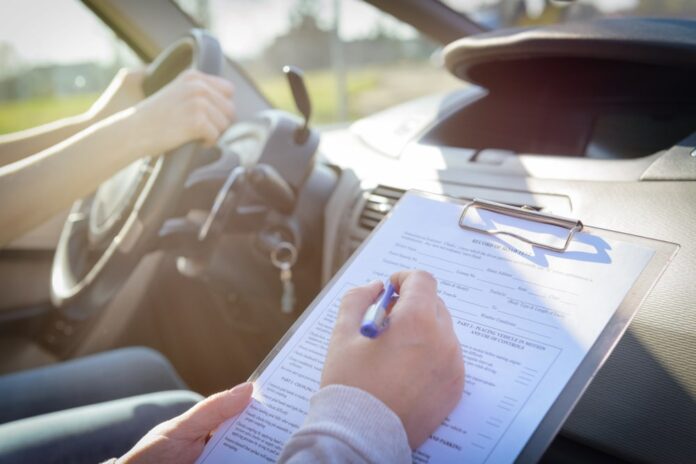There are a few things in life that we crave more than anything else. One of these is unquestionably a driver’s license. For some reason, it offers you a sense of independence, age, and responsibility.
Getting a driver’s license might be easier or more difficult depending on where you live. To approach a car or a driving teacher, you must first meet a few prerequisites. Some countries will not let you take tests or driving lessons until you are 18, whilst others will let you take tests and examinations when you are 16 or 17 and driving lessons when you are 18.
When it comes to acquiring a driver’s license, there are several methods and paths available based on your region throughout the world. As you can see, the issue of the day in Canada is automobile licenses. In general, there are three types of driving licenses in Canada: G1, G2, and G license. We will go over all of these in this post, so stick with us until the finish, and certainly check out https://www.g1practicetest.ca/. This is the location where you will quickly discover everything you need to effectively prepare for all of the examinations and acquiring your license.
Without much further ado let’s dive into the meat and potatoes of the article.
As we already mentioned there are three kinds of driving licences in Canada – G1, G2 and G licence. Let’s start from the top, shall we?!

1. G1 licence
A G1 licence is a written test you need to study and prepare for some time before the written exam. It is a basic written knowledge test that will get you your G1 licence if you pass it. This licence is also known as a learner permit where you can operate a vehicle but with a bunch of restrictions. This type of licence has been made so you can drive and still learn and get the grasp of things but with some restrictions. When it comes to restrictions, they include things like: you can’t drive alone and you must have a passenger that has a G licence or a full driving licence. You must obey the rules that include zero tolerance for alcohol and drugs, you have a time restriction on your driving which includes forbidden driving times from 12:00 a.m. and 5:00 a.m. There is also another restriction that includes driving on certain roads and highways which is logical and justified, mostly because you as a new driver without much experience and practice, wouldn’t be able to safely navigate these routes and you could make a lot of issues to other drivers. Another thing you need to be is of age to get this licence and operate a vehicle, and the age is 16. You always have to wear seatbelts and you can only drive certain vehicle types, in this case, class vehicles – cars, vans, small trucks. To most of you, this might seem unnecessary or too restrictive as well as too tedious, but this is just a small step toward the other type of licence that will be a bit more appealing.

2. G2
When it comes to the G2 license, this is your chance to drive alone and experience some independence behind the wheel. The G2 licence is accessible after passing the G1 exit road exam, and it must be held for at least one year before taking the G2 exit road test and applying for a full G licence. With this form of license, you must go through additional testing and clearance before you may drive independently on any road or highway in Ontario at any time. One thing to keep in mind is that you still have certain constraints and requirements to follow if you wish to be eligible for a full G driving license after a year. In terms of constraints, you must have a 12-month practice time. This means you can practice with your G2 license on any Ontario road, at any time, without the need for another experienced driver to accompany you. Again, there is a rigorous zero blood alcohol and cannabis limit, which means you must abstain from any opiates or alcohol if you wish to be eligible for a full G license.
Your safety and the safety of all of your passengers, at any given time, must be your priority and the lack of seatbelts on you or your passengers will result in a fine and your chance at a full G licence taken away.

3. The full G licence
This has been a relatively difficult trip, but you have now reached here, where you have acquired a full G license. As a result, the G license is the last level of the graded licensing system. Obtaining a full license eliminates most driving restrictions and allows you to drive on all roads at any time. It also provides you a sense of comfort since you don’t have to be fearful, or at least not as much. The operation is over, and you won’t have to worry about any more road tests or insurance premiums, which is a huge financial relief. When we discussed driving freedom, we mentioned that the full G licence does not exempt you from obeying the law, and even with this license, you have some limits. They declare that you are only allowed to drive G class vehicles. A blood alcohol concentration of more than 80mg is prohibited for drivers. Drivers who have 50mg-80mg in their system should use caution. Administrative penalties, such as a roadside suspension or an immediate roadside restriction, may be enforced. Your BAC is 0 if you have a G license and are 21 years old or younger.
For any additional information and questions, you may have you should visit official government sites that will provide all rules and regulations regarding the driver’s licence requirements and needs in your region. As for the pricing, some general info states that the cost of a G driver’s license is around $90. When your Ontario driver’s license expires, it costs another $90 to renew it, but keep in mind that this pricing differs from those for the G road test and that all of these prices are subject to change.








